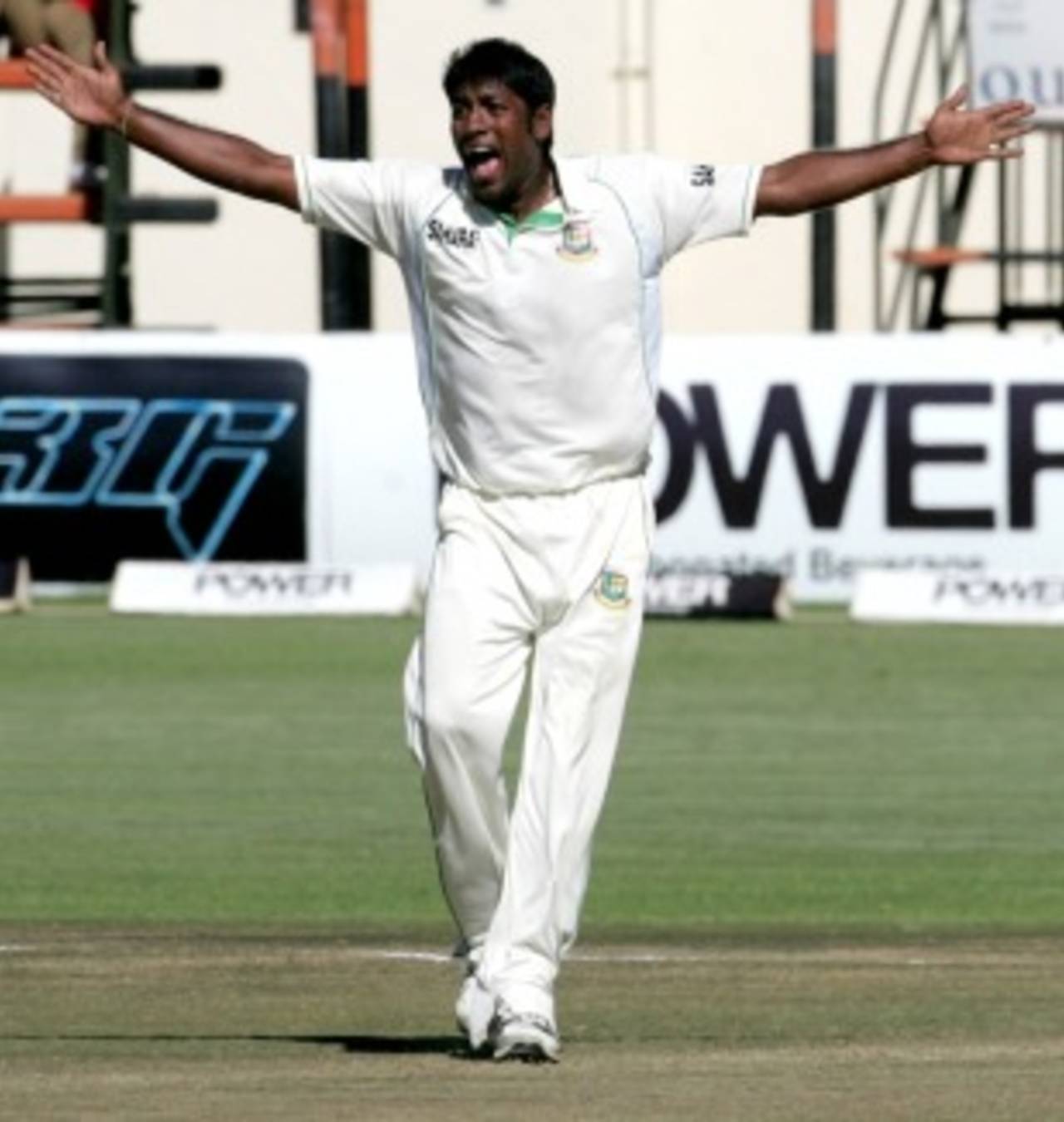A mere look at the difference in numbers between the two Tests suggests a large break between the two matches. It was as if Bangladesh had played the first Test in 2002 and the second in 2013. Of course, it was a four-day break during which time they mostly looked around Harare for a morning spot in the nets.
But the nature of the contest was such that Bangladesh's recovery from a
335-run defeat to a
143-run win didn't seem implausible. They were the better team on paper with more experienced players, and came into the Tests with a more impressive showing in the previous tour.
Bangladesh, for once, found resilience at their beck and call. Robiul Islam ran in, all day, with the new ball and old, before and after a break. It wasn't just the odd spell but every time Robiul delivered, it started off straight, pitched and curved out. Consistently. It went on for 110 overs over nine days.
There have been instances of these newfound characteristics becoming infectious in the Bangladesh dressing-room. No sooner had Sohag Gazi told the team manager that he was not afraid of facing West Indian fast bowlers under lights, it became clear that the rest of the team would man up. It was the same with Shakib Al Hasan's unshakable confidence some years ago. It spreads, and this resilient bit would certainly be helpful to the cricketers' psyche.
Another set of numbers that fascinates is the twin half-centuries by Shakib, Mushfiqur Rahim and Nasir Hossain in the second Test. And those invariably came in the same sequence, to the same effect.
The engine room has found its core. All it needs are the pivots on the top and bottom to work properly. Shakib was forceful, almost intimidating to the Zimbabwean bowlers. There were moments in which he looked as if choosing between two or three shots to certain deliveries. It was quite evident in his manner of dismissals that he was bored by Elton Chigumbura and Hamilton Masakadza's pace, but Mushfiqur's earnestness to the cause kept the other end watertight.
The Bangladesh captain was the only batsman in four innings to have made the bowler earn his wicket, or fallen to a fantastic catch. Each of those happened twice, but by the time he was out in both innings of the second Test, the job was done. He had to plant a certain sense of belief among the batsmen that runs are available as long as there is a good supply of patience.
Nasir takes on from his captain. He comes in at No.7, a graveyard for middle-order batsmen in some teams but he makes it look like fun. Nasir doesn't hold back from his shots and doesn't defend astutely.
Among many of the Bangladesh players, there is a lack of Plan B, a failsafe if their natural game doesn't suit the conditions
The attitude has to spread, just like Robiul's resilience and Mushfiqur's assuredness. They are not really free spirits in the dressing-room but have devised ways to bounce back from setbacks. They do it their way, but some of the others haven't quite found their methods.
Among many of the Bangladesh players, there is a lack of Plan B, a failsafe if their natural game doesn't suit the conditions. Shahriar Nafees left a massive gap between bat and pad in the second innings of the first Test, by merely taking too much of a liking to Kyle Jarvis' width. Eventually, a full ball knocked back his stumps.
Jahurul Islam too has resorted to one kind of batting in respective formats. In Test cricket, he seems to have employed his full repertoire of his defensive game has to be employed. So when he has to get out of a jam, like he was in both Tests, he couldn't move quickly enough. He was unlucky once but his swish in the first innings of the second Test is the sort of shot that the selectors won't forget.
Despite coming into the series in good form, Mohammad Ashraful showed no inclination to adjust according to the bowlers, conditions or situations. If an all-out attack doesn't suffice, it is straight back to dead defense.
The bowling too has suffered as a result of this fixation towards to one method. Rubel Hossain needs to be given a few bowling plans he understands fully and can integrate into his thinking. Enamul Haque jnr was another who relied heavily on just bowling one type of delivery.
Mushfiqur too has been too reliant on whoever does well with the ball. He probably doesn't believe in short spells, so even the pace bowlers ended up bowling long spells. It becomes easier for a batsman to predict what would come next from a certain angle. His field placings too have been on the defensive side, especially when the batsmen had flirted with danger.
However, Mushfiqur has shown a lot of courage over the last few months, and not just on the field. The decision to drop vice-captain Mahmudullah was the "toughest" in his captaincy. It sounds easy especially when a man is out of sorts, but you don't want to drop your deputy ahead of a crucial game. That was a signature move for Mushfiqur from these two Tests: the guts to take the tough decisions and stand by them.
Mohammad Isam is ESPNcricinfo's Bangladesh correspondent. He tweets here
